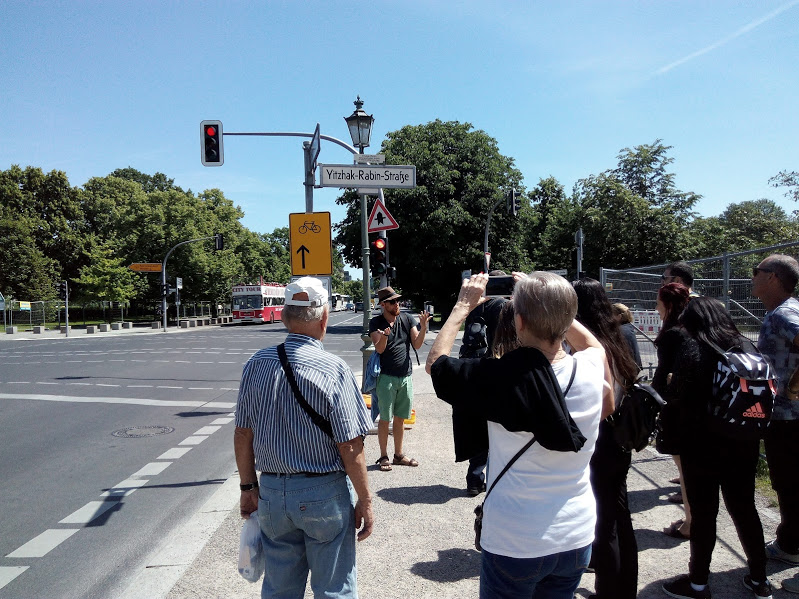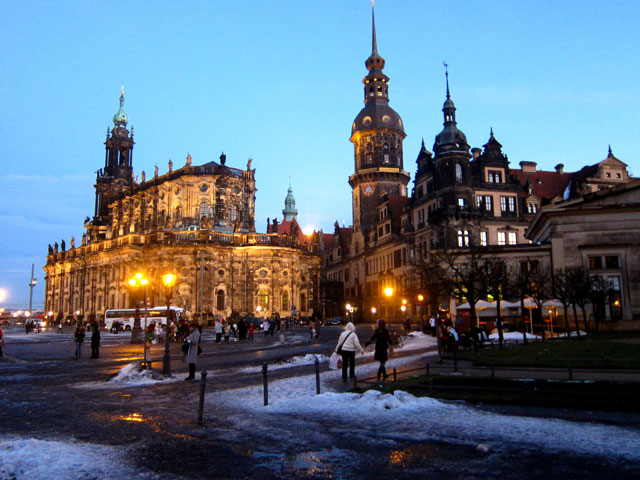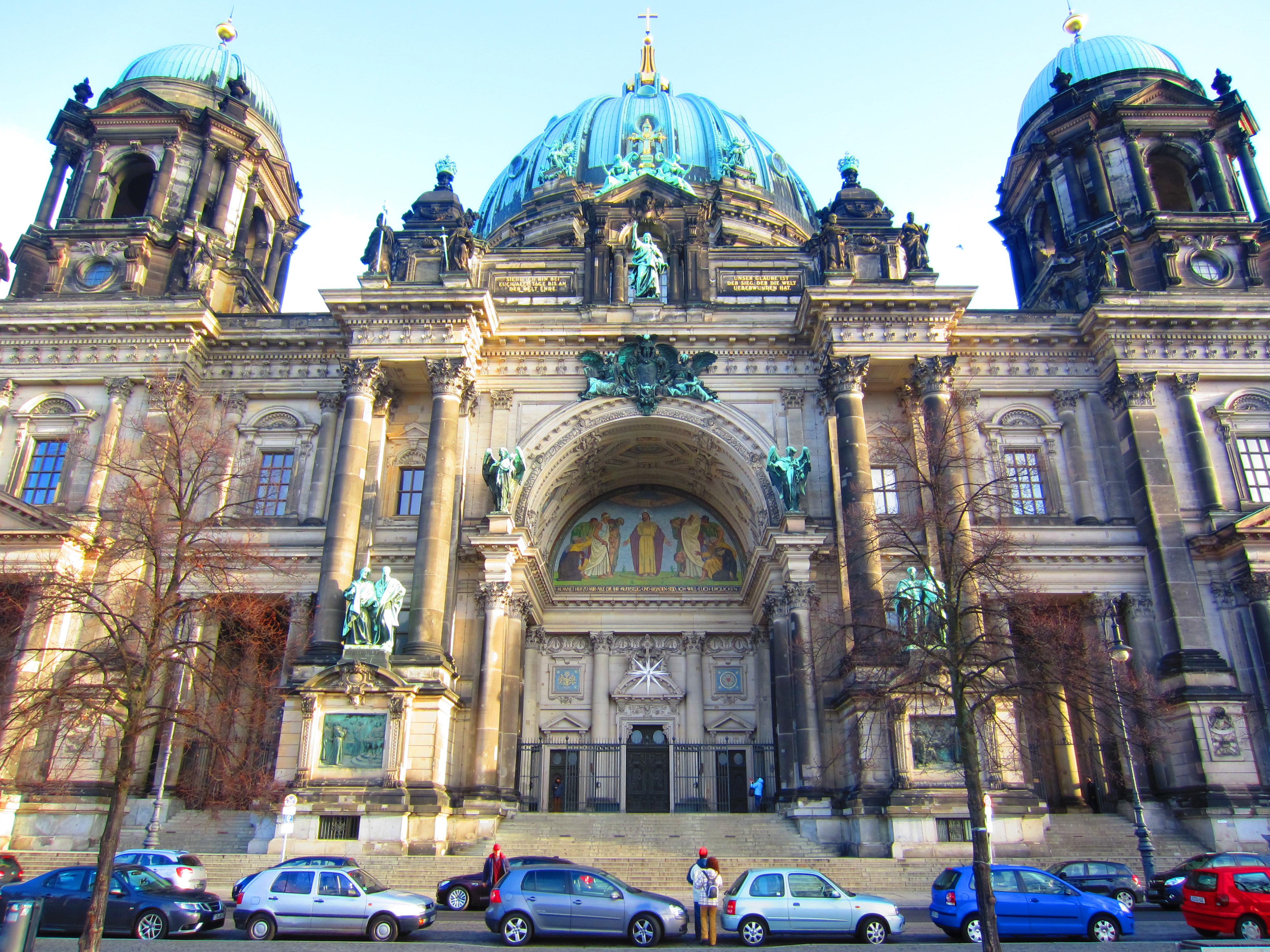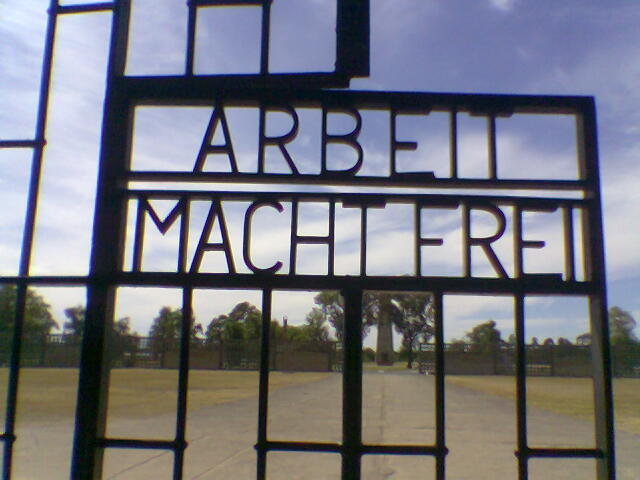[av_section min_height=’50’ min_height_px=’500px’ padding=’default’ shadow=’no-border-styling’ bottom_border=’no-border-styling’ id=” color=’main_color’ custom_bg=” src=’https://berlintoursleah.com/wp-content/uploads/2016/03/תמונה-ראשית-סיורים2-2.jpg’ attachment=’1972′ attachment_size=’full’ attach=’scroll’ position=’top center’ repeat=’no-repeat’ video=” video_ratio=’16:9′ overlay_opacity=’0.5′ overlay_color=” overlay_pattern=” overlay_custom_pattern=”][/av_section]
[av_one_full first min_height=” vertical_alignment=” space=” custom_margin=” margin=’0px’ padding=’0px’ border=” border_color=” radius=’0px’ background_color=” src=” background_position=’top left’ background_repeat=’no-repeat’ animation=”]
[av_textblock size=” font_color=” color=”]
Berlin Tours Leah
Who are we?
Berlin Tours Leah is a young, dynamic company, offering Tours and Incentive packages in Berlin, Potsdam, Dresden and Leipzig. All our staff members are Israelis who live in Berlin, and enjoy exploring the city, it’s culture, architecture, dark past and colourful present. We are driven by passion – to the city, to the history, to the special Jewish story of this place.
What do we do?
Quality tours for singles and groups in Berlin. New and old, east and west, center of musical, literary and artistic creators. Cradle of education and Zionism and the place where the final solution was decided. Capital of united Germany and alternative life style in Europe. Come to experience and know the commuters swarm streets and playground of the greatest modern architects.
We also organise Incentive packages for groups – wheather it is a boutique Hotel, a secret Restaurant that we love or a fun acitvity like driving old East German Cars in the streets of Berlin – Berlin Tours is your address.
[/av_textblock]
[/av_one_full]
[av_heading tag=’h1′ padding=’10’ heading=’Our Tours’ color=” style=’blockquote modern-quote modern-centered’ custom_font=” size=’44’ subheading_active=” subheading_size=’15’ custom_class=”][/av_heading]
[av_one_full first min_height=” vertical_alignment=” space=” custom_margin=” margin=’0px’ padding=’0px’ border=” border_color=” radius=’0px’ background_color=” src=” background_position=’top left’ background_repeat=’no-repeat’ animation=”]
[av_textblock size=” font_color=” color=”]
Berlin for beginners
Panoramic tour in the city, including: Brandenburg Gate, Paris Square, the Reichstag, Unter Den Linden boulevard, Victory Column (Siegessäule), new Holocaust Monument, Museums Island, where one of the world’s most important archeological museum is hidden
The National Opera at the east, observes Bebel Square, where thousands of books written by Jews or anti-regimes authors were burnt in 10th may 1933. In memory of the flaming was established the “Empty Library Monument”, designed by the Israeli artist Micha Ulman. The Berliner Dom (Berlin Cathedral), Historic Museum of Germany, The Soviet Monument, Gendarmenmarkt, Alexander Square (Alexanderplatz), Red City hall, Saint Nicholas District, where one could eat typical German food in most restaurants; stunning Potsdam Square (Potsdamer Platz), flag project of new Berlin, this is the biggest building site in Europe; Topography of Terror nearby a Section of the Wall which yet remained; Checkpoint Charlie,
 Martin-Gropius Museum
Martin-Gropius Museum
Emperor Wilhelm Commemorative Church and Kurfürstendamm (Ku’damm in short) luxurious shopping avenue, that its climax is a store, or more precisely – “temple of consumption” Ka De WE, where at it’s 6th floor there is a food store no one could resist. We’ll conclude our tour at Charlottenburg Castle, the most ancient Italian Baroque style Prussian palace which remained. Near the palace there is the Egyptian Museum and Brohän museum, where a collection of Picasso is displayed
[/av_textblock]
[/av_one_full]
[av_one_full first min_height=” vertical_alignment=” space=” custom_margin=” margin=’0px’ padding=’0px’ border=” border_color=” radius=’0px’ background_color=” src=” background_position=’top left’ background_repeat=’no-repeat’ animation=”]
[av_textblock size=” font_color=” color=”]
Jewish Berlin
The New Synagogue” at Oranienburger St. with it’s golden dome, that was built in 1866 and was destroyed almost totally by the bombing of the allies. Gross Hamburger St., with the Cemetery established in 1672, where important people such as Moshe Mendelson, Hyne Efraim, Daniel Yatzik, the philosopher Marcus Hertz and more, found their last peace
Parents-Home, where the Gestapo used as a prison for the Jews who were waiting to be shifted to the death camps in east of Europe; Boys
School, which was also used as a detainment facility for Jews. Thousands of Berlin’s Jews were sent from this street to their grim death
Today, at almost every turn, there are monuments which commemorate evil. This tour includes most of them, starting with, via “Women’s Statue” at Rosen St., “The Abandoned Room”, Dock 17, “The Bavarian Quarter”, The Pillar in Memory of the Textile Workers in the City, the Train Wagon in Moabit District, “The Empty Benches” in Axel-Springer St., “The Empty Library” at Babylon Square, The Holocaust Monument designed by the architect Peter Eisenman
The tour is finished at the Jewish Museum, designed by the Jewish architect Daniel Libskind. Naturally, we’ll also tour the Hackescher Markt, which is nearby Great Hamburger St
[/av_textblock]
[/av_one_full]
[av_one_full first min_height=” vertical_alignment=” space=” custom_margin=” margin=’0px’ padding=’0px’ border=” border_color=” radius=’0px’ background_color=” src=” background_position=’top left’ background_repeat=’no-repeat’ animation=”]
[av_textblock size=” font_color=” color=”]
Dresden
Capitol of Saxony, lies on the Elbe banks, 500,000 inhabitants
The city is still in a process of rehabilitation and pedant restoration of all its historical structures
On the 13th of February 1945, about a thousand of the allies’ aircrafts bombed the city. This bombing came as a respond to actions of the German army during the war. The bombing ruined most of the city and caused a giant fire, that resulted the death of almost 100,000 citizens. After the war, Dresden became under the Soviet regime. They have already started then the efforts of rehabilitation. However, only after the falling of the iron curtain, Dresden started to reveal its face once again and display its treasures
We shall visit the “Altmarkt Square”, where “The cross church” lies, “The New City Hall”, “Culture Hall”, with its glass front, “The Landhouse Palace”, built in 1770
Then, we continue to the “Neumarkt Square”, i. e. the new market and we shall see “The Women’s Church”, built in 1726 as a Protestant church. It  was the largest and most luxurious church in Germany. During the bombing of the city, it was almost ruined totally and re-inaugurated nowadays, after reconstruction that took decades. Near the church there is “The Arsenal” since 1559, “The Albertinum”, where “Modern Artists’ Gallery” is currently lodged, which holds famous paintings from the 19th and 20th century of German artists such as Casper David Friedrich, Max Libermann, Adolf Menchel, Shmidt Rotlof, Otto Dix etc. Across the gallery lies “The Green cellar” collection. This is the largest collection of fine objects in Germany and one of the best collections in Europe of fine objects inlaid with precious stones
was the largest and most luxurious church in Germany. During the bombing of the city, it was almost ruined totally and re-inaugurated nowadays, after reconstruction that took decades. Near the church there is “The Arsenal” since 1559, “The Albertinum”, where “Modern Artists’ Gallery” is currently lodged, which holds famous paintings from the 19th and 20th century of German artists such as Casper David Friedrich, Max Libermann, Adolf Menchel, Shmidt Rotlof, Otto Dix etc. Across the gallery lies “The Green cellar” collection. This is the largest collection of fine objects in Germany and one of the best collections in Europe of fine objects inlaid with precious stones
Nearby, there is “The Brul balcony”, from which a breathtaking view is visible, therefore it is also called the balcony of Europe
On our way to the next destiny – the Theatre Square – we shall see the “Catholic Courtyard Church” since 1755 and “The Palace”, with the neo Renaissance front. We will not skip the “Noble March”, a colorful mosaic, which displays the Saxony sovereigns since the 12thcentury until 1904. The mosaic is made of 24 thousand porcelain tiles from the Meisen factory
At the Theatre Square we shall see the “Zvinger”, which is actually the symbol of Dresden since 1710 and one of the most luxurious and famous Baroque buildings in Germany. The Zvinger has a large courtyard with impressive fountain, where at its end stands the “Golden Crown” gate, carved and placed with statues. The “Bells’ Pavilion” lies at the left of the crown; across – the “Rampart Pavilion”, “Samper Gallery”, built lengthwise the left wing of the Zvinger. At the right, lies “The Paintings of the Classic Artists Gallery”, which displays collections of German artists such as Dihrer, Holbein etc., Dutch artists as Rembrandt, Italian artists since the 15th and 16th century and French artist since the 17th century
Across the gallery lies “The Arsenal History Museum”. At the left exit of the Zvinger lies the “Porcelain Museum” with the world’s 2nd size collection. In the Zvinger, one could also visit the “Mathematics & Physics Salon” and be impressed, among other things, by ancient globes, measure instruments etc. “Samper Opera”, named after the architect who built it in 1839, stands upright at the theatre square
[/av_textblock]
[/av_one_full]
[av_one_full first min_height=” vertical_alignment=” space=” custom_margin=” margin=’0px’ padding=’0px’ border=” border_color=” radius=’0px’ background_color=” src=” background_position=’top left’ background_repeat=’no-repeat’ animation=”]
[av_textblock size=” font_color=” color=”]
Potsdam and villa Wannsee
The city lies within 30 km south-west Berlin. The capital of Brandenburg was the residence of Prussians kings and also a lively cultural and commercial center. Hitler used the city’s past to connect between Prussia’s great military history and the Nazi regime
Wannsee Villa: in 20th January 1942, a discussion leaded by a leader of the SS, Reinhard Heidreich, commander of the main office for the security of the Reich was held, with the participation of 14 high officials of various ministries and the SS. The discussion was about the ways to apply the decision of deporting the Jews in Europe to the east and murder them. That discussion was named after the place it was held in – “Wannsee Conference”. The protocol of the conference, which was held by Adolf Eichmann, was found among the files of the Foreign Ministry. The exhibition in the place describes history before Wannsee Conference and its results until 1945
From there, we’ll continue to the city of Potsdam, which belonged to East Germany, via “Glinker Bridge”, the bridge of spies. We’ll visit Cecilienhof Castle, summer palace of the royal family, which has also a political meaning, as in the summer of 1945 a conference of heads of the superpowers was held there: Truman from the United States, Stalin from the Soviet Union and Churchill, who was replayed by Attaly, from England. The targets of the conference were to confirm the decisions of “Yalta conference”, formulation an economic-political plan for occupied Germany by the allies  and settle on taking steps against Japan. This was named Potsdam Conference
and settle on taking steps against Japan. This was named Potsdam Conference
We’ll continue to “Sans-Souci Palace”, which was translated from France to “without problems”. The palace was built in rococo style at the beginning of the 18th century by Friedrich the Great. Among the gardens of the palace there are hidden charming places such as: Chinese teahouse or the Cecilia’s gardens, the new palace, the Dutch windmill, the new rooms, the obelisk, “The Ruins Hill” and the fountain from the 18th century
If time and weather permit, we’ll also visit at the Peacock Island – a fascinating island, as if it was taken from one of the Green Brothers tales, where dozens of beautiful, colorful, giant peacocks stroll peacefully. This island, lies on Havel river bank, was established by Friedrich the 2nd in 1793. Its length – 1.5 km, and 500 cubic meter width
Naturally, we will also visit the ancient Dutch quarter, built in the 18th century
[/av_textblock]
[/av_one_full]
[av_one_full first min_height=” vertical_alignment=” space=” custom_margin=” margin=’0px’ padding=’0px’ border=” border_color=” radius=’0px’ background_color=” src=” background_position=’top left’ background_repeat=’no-repeat’ animation=”]
[av_textblock size=” font_color=” color=”]
Our plan for One Week Seminar: Past – Present – Future
First Day
We will pick you up from the airport and then go to Treptower Park and the “gothic” boulevard. During the ride a first, general explanation about Berlin will be given. In the Park you see the impressive “Soviet War Memorial” that was made in memory of the 5,000 red army soldiers, who were killed in the battle of Berlin. We will have a conversation about the historical meaning of the memorial that includes, among others, sixteen sarcophaguses with quotes of Stalin in Russian and German, and the “Russian Mother” sculpture, which rise to the impressive height of three meters.
Berlin: Between separation and reunification – we will go to the “East Side Gallery”, the remains of the Berlin wall, which have become to a graffiti museum in the heart of Friedrichshain district. On the way you will see the “Molecule Man”, a sculpture that represents unity and entirety.
We will continue to the Lustgarten (“Pleasure Garden”), the luxurious royal palace garden who was destroyed by the Soviets.
Then we will arrive at the most beautiful square in Berlin, Gendarmenmarkt, at which the guidance will be focused on the German culture of Schiller and Goethe.
Second Day
From Weimar Republic to the Nazi period – after breakfast we will go by the Victory Column (siegessäule in German), through the June 17th boulevard and Yitzhak Rabin street. In the west part of the boulevard we will find Paris square and the most recognizable symbol of the city – the Brandenburg Gate. We will focus on the Weimar Republic period and the circumstances that abled the Nazis to seize power, and also talk about the nowadays Berlin and its reflections of the past.
We will also see the Central Bank of the famous architect Frank Gehry, the Adlon hotel, Max Liebermanns academy of arts and the embassies of America, Switzerland, Russia, France and England.
Later we will walk on Wilhelm Street and discuss the processes the city went through the rise of the Nazis and the end of the Second World War, which affected every aspect of life: police, military, education, laws and even culture. We will talk about the place of the ordinary citizen in the state, the role of the international system and the appeasement policy. In addition, we will focus about propaganda in former Nazi Germany and the way it is being remembered nowadays in the German collective memory. This is also the place for a break.
We will arrive to Hitler’s bunker, where nowadays there is just a parking lot with a single sign as evidence to the past. We will discuss the end of the war through the story of the bunker itself, and ask how Germany replaced its symbols during the de-nazification process.
Near the bunker there is the Memorial of the Murdered Jews of Europe. The opening of the memorial came with a long public debate regarding its nature. The 2,711 grey concrete cubes of different heights invoked a debate – whether Germany can conceive the place and the past or not.
Not far away from that memorial there are other two – the memorial for the homosexuals who were murdered by the Nazis and the memorial for the East Germans who were shot to death while trying to escape to the West.
We will also see the Reichstag, where the German government sits. During the tour in the building we will talk about the political history of the place and the political system of nowadays Germany, about the unique architecture of the place and about the works of art inside it. We will have a coffee break (and a cake) in the café inside the Reichstag.
There are also bits of modern Berlin. We will see the Hauptbahnhof, the ultra-modern central train station of Berlin, which is the biggest glass complex in the world, the offices of the Kanzler Angela Merkel, the kindergarten of the children of the parliament members, the bridge of the German unification and the famous Charité hospital.
Third Day
Sachsenhausen
We will get out of the city, to the former concentration camp of Sachsenhausen, located in the industrial city Oranienburg.
The Sachsenhausen Concentration Camp was built in the summer of 1936 by concentration camp prisoners from the Emsland camps. It was the first new camp to be established after Reichsführer-SS Heinrich Himmler was appointed Chief of the German Police in 1936. The design of the grounds was conceived by the SS architects as the ideal concentration camp setting, giving architectural expression to the SS worldview, and symbolically subjugating the prisoners to the absolute power of the SS. As a model for other camps, and in view of its location just outside the Reich capital, Sachsenhausen acquired a special role in the National Socialist concentration camp system. This was reinforced in 1938 when the Concentration Camp Inspection Office, the administrative headquarters for all concentration camps within the German sphere of influence, was transferred from Berlin to Oranienburg.
More than 200,000 people were imprisoned in the Sachsenhausen Concentration Camp between 1936 and 1945. At first the prisoners were mostly political opponents of the Nazi regime. However, increasing numbers of members of groups defined by the National Socialists as racially or biologically inferior were later included. By 1939 large numbers of citizens from the occupied European states arrived. Tens of thousands of people died of starvation, disease, forced labor and mistreatment, or were victims of the systematic extermination operations of the SS. Thousands of other prisoners died during the death marches following the evacuation of the camp at the end of April 1945. Approximately 3,000 sick prisoners, along with the doctors and nurses who had stayed behind in the camp, were liberated by Soviet and Polish soldiers.
We will enter the camp through the notorious iron gate with the words “Arbeit macht Frei” (The work liberates), and see the exhibition dedicated to the murdered prisoners, located in authentic barracks.
Fourth Day
Jewish Berlin – This day will be dedicated to the Jewish community in Berlin, the Integration and rejection it experienced throughout history.
We will begin the day at the new golden dome Synagogue at Oranienburger Street. We will continue walking through Grosse Hamburger Street, where the everyday life of the Jewish community before and during the war will be revealed to us. We will see the Jewish school, Hermann Gallery and the burnt Synagogue.
At Hackescher Markt we will go through a maze of beautiful courtyards, listen to the story of the Jewish people at the 19th century. We will finish at Otto Weidt Museum, a museum dedicated to the man who saved dozens of people during the war.
After a lunchbreak we will go to the unique Jewish museum planned by the architect Daniel Libeskind.
Fifth Day
This day would be dedicated to rise and the fall of the Berlin Wall, and to the phenomena called “Ostalgie”, which is still influencing many of the people in former East Germany.
The day begins at the topography of the terror – once the headquarters of the Gestapo, and nowadays a fascinating museum that shows the rise of the regime of fear and terror. From the former headquarters remained only the walls of the basement, where citizens were being tortured. Across the street there still are the former headquarters of the Nazi air force, the “Luftwaffe”, where Hermann Göring was sitting.
In front of the wall art on this building we will discuss the utopia the communist propaganda used to describe to the citizens. We will describe the everyday life in East Germany in relation to work, housing, education and health, and the public resistance to give up its freedom. We will tell the story of the June 17th 1953 revolution and the implications of it on building the wall.
We will see Check Point Charlie, one of the most central transition points between East and West Berlin after the emerging of the wall. There we will have a coffee break.
We will drive through the publishing house of the Axel Springer news corporation, where outside there is a huge statue of a man walking on wall, right where the wall used to be. From there we will proceed to Bernauer Street, to the museum of the Berlin wall. After an observation from the outside we will go inside and listen to stories about escape attempts, and about the church which was demolished in order to make room for the wall.
At the evening we will visit the museum island. The Spree River which flows across the city splits at this part into two ways. Between them there is an island, where starting the 19th century the Germans started opening five museums. We will hear the story of those museums and visit two of them.
We will have dinner at Käthe Kollwitz square, in the former workers neighborhood Prenzlauer Berg, which became in the last decade the new Soho of Berlin.
We will begin at the Bavarian Quarter; there you will be exposed to 30 signs with anti-Jewish laws from the Nazi era. We will visit the memorial site
at the next school and hear about the legislation processes which have led to these laws. We will also visit an exhibition called “WIR WAREN NACHBARN” (we were neighbors), which presents over 150 biographical albums; the most famous biography amongst those belongs to Albert Einstein.
The Tour will be continued at Grunewald, a luxury neighborhood where many Jewish used to live. At the end of this neighborhood you will find the platforms from which were the Jewish deported and sent to the concentration camps. Here we will have a short ceremony in memory of the victims.
We will continue to Villa Wansee, located on Van Lake, and go inside the house in which the critical decision regarding the future of Jewish all over Europe was made.
Our tour continues at Potsdam, the capital city of Brandenburg. We will walk through the, marvelous gardens of Sanssouci palace, the residence of Friedrich the great. We will see Cecilienhof palace, the place at which the famous convention of 1945 took place.
Seventh Day
This day will be dedicated to the special story of Dresden, a city that has been completely destroyed during the war, and its unbelievable  reconstruction.
reconstruction.
On the way there you will be taken to the breathtaking resort called “The Bastei”, once we will arrive to Dresden, we will go through the old market square, the famous Kreuzkirche (Church of the Holly Cross), the new city hall, the women’s church, and Brühl’s Terrace.
On the way to our next destination, the Theater Square, we will see the Landhaus Palace and listen to the fascinating story about the kings of Saxony, the tragic story of the city during the war and its rehabilitation.
[/av_textblock]
[/av_one_full]


